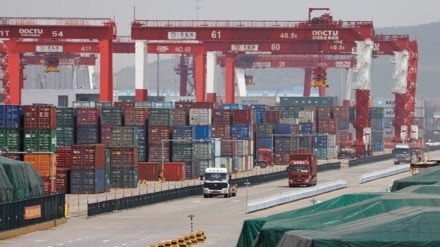US President Donald Trump, on April 2, announced reciprocal tariffs of 10-50 per cent on more than 50 countries, including 26 per cent on India. While Trump has announced a 90-day reprieve from higher tariffs for over 75 countries, Crisil Ratings said, the tariffs are much higher than earlier expected and if implemented, may slow down global economic growth and impact supply chains. Elaborating on the impact on Indian exports, “We believe the 11 key sectors will see moderate to low impact because of the tariffs. Compared with our previous assessment, we expect the impact to be higher for one sector (diamond polishing) and lower for two (smartphones and textiles). Our risk assessment for the other eight sectors remains unchanged.”
On April 9, in a dramatic U-turn, Trump announced a 90-day reprieve from higher tariffs. “I have authorised a 90-day pause, and a substantially lowered reciprocal tariff during this period, of 10 per cent, also effective immediately,” Trump had said.
In the US, Crisil said, with the increase in costs likely to be passed on to end customers, consumer sentiment may be dampened. The uncertainty surrounding the tariffs may also dampen investment sentiment for corporates (global as well as domestic). For India, merchandise exports to the US accounted for only 2.0-2.5 per ceent of the gross domestic product (GDP) in the three years through fiscal 2024. “While slowdown in global trade and GDP growth of developed economies could impact India’s export-oriented sectors, strong balance sheets may provide much-needed cushion to credit profiles in a volatile global trade environment,” it added.
Sectors to face higher impact
The diamond polishing sector, Crisil said, will see moderate (earlier envisaged as low) impact as the tariffs would make polished diamonds more expensive. The sector is already reeling from muted demand due to competition from the cheaper alternative—lab-grown diamonds—and may find it difficult to pass on the entire tariff burden to end customers. “That said, the impact may be somewhat mitigated by the unique status India enjoys in diamond polishing, being the largest player by far. How much of the price impact is borne by miners, the major players in the supply chain, will also be monitorable as supplies may be controlled at their end, depending on the end-use demand and inventory-holding ability of retailers and polishers,” Crisil report maintained.
For smartphones, the impact is revised to ‘moderate’ (from ‘high’ earlier) as higher tariffs on competing countries China and Vietnam render India a more-viable potential supplier to US-based customers.
For textiles, Crisil revised the assessment to ‘low’ (from ‘moderate’) due to relative price advantage from much-higher tariffs on Bangladesh, Vietnam and China, the key competitors to India in this segment.
That said, the Indian government’s tariff diplomacy and safeguard duties on key commodity sectors will be crucial to protect the domestic market from dumping risks.
Also, Crisil added, the situation continues to evolve as other countries may respond with either a change in their tariff policy or bilateral agreements with the US. Given the potential for evolution in geopolitical alliances, further changes in tariff levels and their influence on global trade, the impact on credit quality outlook of affected sectors would warrant close monitoring, especially for export-oriented sectors, the report concluded.
